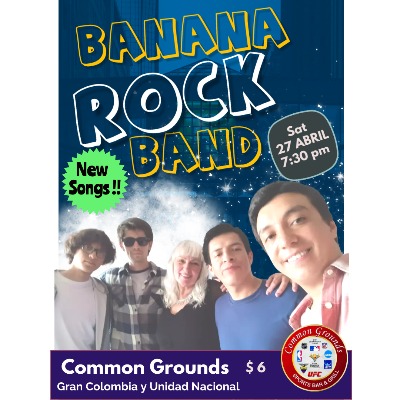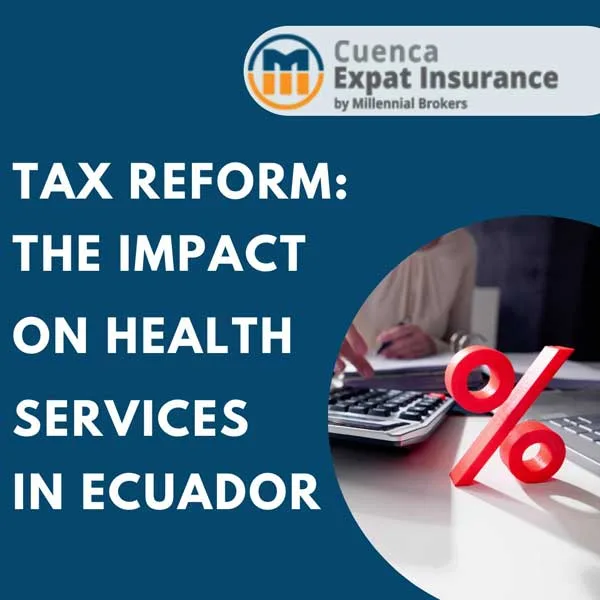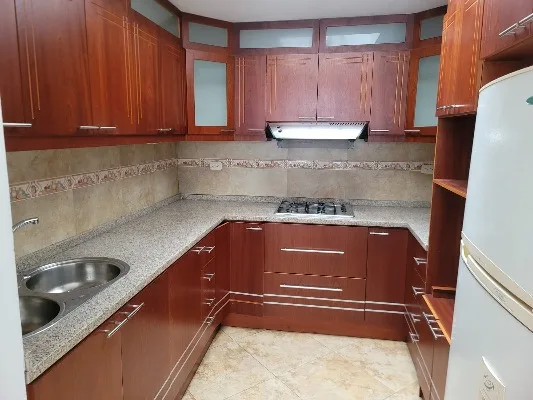SHEL’S AND FRANK’S EXCELLENT ECUADOR ADVENTURECuenca — the dream is real: Getting to know the city
Editor’s note: This is the ninth installment of a multi-part series chronicling the adventures of Shel and Frank Drake on their first visit to Ecuador. Frank is a travel writer and Shel is a professional travel photographer.
We took our leave from brea kfast and off we went to the fresh-food Mercado 9 de Octubre, which one of the guidebooks said opened only on Thursday (it also carried the inevitable caution: “It’s wise to take care in the market areas, particularly Mercado 9 de Octubre”). We walked the eight or so blocks and when we got there, we found a solid three-story building, with produce and meats on the first and second floors and food counters on the third. It sure looked to me like this mercado was a daily affair and we learned that it is. Nor did we see a single thug.
kfast and off we went to the fresh-food Mercado 9 de Octubre, which one of the guidebooks said opened only on Thursday (it also carried the inevitable caution: “It’s wise to take care in the market areas, particularly Mercado 9 de Octubre”). We walked the eight or so blocks and when we got there, we found a solid three-story building, with produce and meats on the first and second floors and food counters on the third. It sure looked to me like this mercado was a daily affair and we learned that it is. Nor did we see a single thug.
And what a treat was in store for us. Compared to the Amazonas in Ibarra, 9 de Octubre is airy, bright, clean, well-organized, even hygienic, with a good-sized indoor parking lot.
Here we talked to the lady at a bitter-chocolate booth, selling various shapes, sizes, and colors of baking chocolate; big bricks of compacted brown sugar and vanilla, the crumblings of which are used for coffee and tea; and some ready-to-eat nut fudges.
We also stopped at a juice bar on the third floor run by a woman with a welcoming smile and twinkling eyes. She sat us down and gave us a taste of the fruit juices filling five blenders: orange, pineapple, tomato, mixto, and tamarind. Again, Shel was taken with tamarindo and the juice lady poured us a big tulip glassful. Then she pulled a chunk of tamarind out of her mini-refrigerator for Shel to see and smell and taste. We also watched her grab a handful of honkin’ carrots and run them through a serious vegetable juicer, then add an inch of deep green juice from the fridge, serving up a health drink to a customer who looked like she really needed it. When we asked what we owed, the woman said, “Cuarenta centavos.” The whole introduction to juice bars in Ecuador, including samples for two and a big glass for one, plus a taste of tamarind and some Spanish, came to forty cents.
We walked the streets surrounding 9 de Octubre, popping into a panaderia for some hard rolls, then dropping into a  pasteleria next door for some cookies. Shel shot photos of kids on the corner helping their mothers and grandmothers run beverage stands and men vending fruit and flavored shaved-ice from the backs of bicycles. We picked a stray almuerzo and were served delicious quinoa soup, rice and chopped flank steak, garnished with lettuce, tomato, and red pepper, costing the usual $1 apiece.
pasteleria next door for some cookies. Shel shot photos of kids on the corner helping their mothers and grandmothers run beverage stands and men vending fruit and flavored shaved-ice from the backs of bicycles. We picked a stray almuerzo and were served delicious quinoa soup, rice and chopped flank steak, garnished with lettuce, tomato, and red pepper, costing the usual $1 apiece.
We found the flower, textiles, and dry-goods markets, as well as Carolina Bookstore, the English-language bookseller. A beauty salon beckoned to Shel, who made an appointment for a styling session. At a cabinas storefront, we checked our email and did a little surfing for a penny a minute; the half-hour for our two computers cost 60 cents. We even bumped into John the Canadian, whom we hadn’t seen since the last day of the IL conference in Quito, at a corner coffee bar. We accompanied John to the hostal he was staying at ($8), El Hogar Cuencano, run by Maggie who speaks good English; she showed us the kitchen, the nicest matrimonial room ($18 for two), and the view from the roof.
Shel and I were chilling like the natives in colonial Cuenca, fulfilling the first phase of our agreement to familiarize ourselves with the city.
***
Friday morning, we had our first complimentary breakfast at the Sakura sushi restaurant. It was a little weird partaking of our fruit, juice, croissant, and eggs (extra) in an eatery permeated by an odor of raw fish. But the food was fine, the restaurant was right across from the river, and as always in Ecuador, the outside temperature was perfect, which makes most experiences here seem even more idyllic.
Then we rendezvoused with Chela (short for Graciela), the rental agent at David Morrill’s real-estate office. Conveniently, she showed us two apartments in the building right next door to the Villa Nova, right between the hotel and the sushi joint, and we loved the second-floor flat, enamoring us of the river location even further. She also took us out to a high-rise condo on the west side of town. On an upper floor, it had nice views of the city, but it didn’t compare to the charm of downtown.
We talked at length with Chela about the rental-property market in Cuenca. It seemed to us, from looking at a few of  the Cuenca websites, that there were plenty of rentals, but Chela made it clear that the market was extremely tight. Though she showed us several properties, they were all rented. In fact, she managed 32 apartments around Cuenca and every one of them was occupied.
the Cuenca websites, that there were plenty of rentals, but Chela made it clear that the market was extremely tight. Though she showed us several properties, they were all rented. In fact, she managed 32 apartments around Cuenca and every one of them was occupied.
Chela explained that Ecuadorians don’t really have a culture of investing in property to rent out. Rather, they put their money into property they expect to remain in the family for generations, a rock-solid savings account in a country and on a continent with such a long tradition of corruption that there’s a deep distrust of governments and banks and paper money.
Case in point: Ecuador’s sucre was inflated out of existence only ten years ago (the “Big $witch” took place in September 2000). The host of issues arising from Ecuador taking on the dollar as its fiat currency is a topic for another time, but money upheavals, common in Latin America, are always tough on a country, especially the ordinary Joses and Juanas who don’t have the resources to adjust quickly by exchanging the old cash for the new, let alone parking their stash in gold, silver, or jewels to weather the currency storm.
in September 2000). The host of issues arising from Ecuador taking on the dollar as its fiat currency is a topic for another time, but money upheavals, common in Latin America, are always tough on a country, especially the ordinary Joses and Juanas who don’t have the resources to adjust quickly by exchanging the old cash for the new, let alone parking their stash in gold, silver, or jewels to weather the currency storm.
So real estate typically gets the money, and all over Ecuador you see perpetually unfinished homes, rebar sticking out from the walls and up from the roofs and gap-toothed layers of bloques (cinderblocks) as families put cash into their “savings accounts” by expanding their houses.
According to Chela, Ecuadorians scrimp and save and sink their fortunes into the ownership of a home and most have enough money for only one.  Then they have to save awhile longer to afford refrigerators, washers and dryers, dishwashers, and the like. So they don’t even dream of raising enough capital to do it all over again in order to rent to other people.
Then they have to save awhile longer to afford refrigerators, washers and dryers, dishwashers, and the like. So they don’t even dream of raising enough capital to do it all over again in order to rent to other people.
David Morrill told us that owner-occupied dwellings, in Cuenca anyway, account for 60%-70% of the real estate market. Who makes up the other 30%-40%? David said that Cuenca’s top retirement rankings notwithstanding, it’s a myth that “the Americans are coming! the Americans are coming!” It's true, he says, that more foreigners are moving in, but we gringos still only make up one-half of one percent of the market for properties in the southern Andes.
Yes, there’s a boom going on here — cranes hovering over the horizon, high-rises pushing up the skyline, prices inflating a  little fast. They can’t bubble up too high too quickly, though, thanks to the unavailability of mortgages; long-term lending facilities in all of Latin America are few and far between. Thus, the government can’t intervene to accelerate the housing market by dropping interest rates, issuing tax incentives, guaranteeing mortgages, lowering underwriting standards for taxpayer-backed corporations, compelling lenders to make sub-prime loans, allowing investment banks to package those loans into derivatives hedged by insurance-company credit default swaps, all supported by unsuspecting buyers of the American dream who have foreclosure nightmares in their near future.
little fast. They can’t bubble up too high too quickly, though, thanks to the unavailability of mortgages; long-term lending facilities in all of Latin America are few and far between. Thus, the government can’t intervene to accelerate the housing market by dropping interest rates, issuing tax incentives, guaranteeing mortgages, lowering underwriting standards for taxpayer-backed corporations, compelling lenders to make sub-prime loans, allowing investment banks to package those loans into derivatives hedged by insurance-company credit default swaps, all supported by unsuspecting buyers of the American dream who have foreclosure nightmares in their near future.
With owner-occupied property making up, say, 60% of the market, the other 40%, David told us, consists of Ecuadorian nationals who live abroad, earn First World wages, and return with money enough to buy a place.
And it’s true: In Cuenca, we kept running into ecuatorianos who spoke English after working in the States, sometimes for years on end. A cab driver picked us up by pulling over and saying, “Where ya headed, amigo?”; he’d driven a taxi in Manhattan for five years. A restaurant owner told us he’d been a cook in New York and saved enough money to come home and open his eatery, complete with tablecloths, cash register, even menus. Chela’s driver on our real-estate tour had gone to high school in, of all places, Omaha, Nebraska.
a taxi in Manhattan for five years. A restaurant owner told us he’d been a cook in New York and saved enough money to come home and open his eatery, complete with tablecloths, cash register, even menus. Chela’s driver on our real-estate tour had gone to high school in, of all places, Omaha, Nebraska.
We heard that Ecuadorians comprise the sixth-largest foreign-born population in New York City (and I researched it: According to the 1990 census, there were 60,000, but that nearly doubled in to 115,000 in the 2000 census. If it doubled again, that would make almost a quarter-million in 2010.)
These are the people who bring back the big bucks and buy up the property — again, though, mostly for themselves and their families. Some highly successful Ecuadorian nationals abroad do return to invest in rental property, having learned about it in New York or New Jersey or Madrid or Omaha. And investors from around the world are attracted to Cuenca-type real-estate booms like paramedics to explosions. Add it all up and the condos under construction in Cuenca, David said, are completely sold out before they’re finished and rentals can be tough to come by.
Was I discouraged? Not at all. In the first place, Shel and I know a little something about real-estate bubbles. She sold a house in California near the top of the market. For 20 years I’ve lived in the boom-bust economy of Nevada where today, 50% of homeowners are under water. Once again, we had a deep appreciation of a place like Cuenca in which, to get in on the potential profits from rising property prices, you have to bring cash. In other words, you have to be able to afford it.
Actually, with a little weighing of factors and mulling over outcomes, I determined to use the tight market to my advantage by reserving  one of the apartments we saw. I put my name at the top of the waiting list, gambling that I’d be ready to return by the time it became vacant. If not, I could still pay to hang onto it for a month or three, forcing me to claim it as quickly as possible, but also setting me entirely up when I did.
one of the apartments we saw. I put my name at the top of the waiting list, gambling that I’d be ready to return by the time it became vacant. If not, I could still pay to hang onto it for a month or three, forcing me to claim it as quickly as possible, but also setting me entirely up when I did.
Another gamble: I didn’t let Shel in on it at the time. I figured I’d see how she felt about things when we got home, how long it took for the apartment to open up, and for how long I might have to pony up the rent for a vacant flat 5,000 miles away.
What was the worst that could happen? I’d give up the place. And Plan B was easy enough: Stay at hostals for $8 a night till another suitable rental became available.
Chela dropped us off at the Feria Libre Mercado, also on the west side, south of the river. This is another covered market like Ibarra’s, perhaps not quite as big and a layer or two less funky. Here we saw live  animals for the first time, chicks and pigs and guinea pigs and goats. While Shel snapped away, I had the idea to perfect my market etiquette at the small indoor 9 de Octubre, learning the words and prices for all the produce, finding the friendly vendors, and fine-tuning my negotiating tactics, then coming out here to the hard-core Feria Libre and seeing if I could get better deals. I was now thinking like an expat trying to live on the cheap, a travel writer always on the lookout for content, and a lover of Ecuador trying to be worthy of citizenship.
animals for the first time, chicks and pigs and guinea pigs and goats. While Shel snapped away, I had the idea to perfect my market etiquette at the small indoor 9 de Octubre, learning the words and prices for all the produce, finding the friendly vendors, and fine-tuning my negotiating tactics, then coming out here to the hard-core Feria Libre and seeing if I could get better deals. I was now thinking like an expat trying to live on the cheap, a travel writer always on the lookout for content, and a lover of Ecuador trying to be worthy of citizenship.
We wandered the streets around the Feria and stopped in for menu del dia, again a dollar apiece, tipping the teenage waitress 50 cents “por el buen servicio.” Then we grabbed a cab to the Villa Nova where I sat on the front deck sunning, while Shel worked out the rental-car arrangements for the morning; the Avis agent, she told me, spoke excellent English.
I spent the evening studying the “Vicinity of Cuenca” sections in the guidebooks, figuring out where to go and how to get there. Shel’s hell on wheels when it comes to wanting to explore. But I’m the one who does the researching, deciding, and driving. Still, I was grateful for her reserving the rental car and even though I’d been feeling a little tired on our eleventh day in Ecuador — I’m not the globetrotting stud I once was — the guides pinpointed some prime spots and now the surrounding southern sierra countryside was beckoning to me too.
Photo captions: a banana truck delivering a load to the market; gorgeous Cuenca children helping at their abuela's street stall; in Ecuador, houses are eminently expandable, with rebar ready for a second story; corn grows everywhere; another El Barranco apartment building; Cuenca is experiencing a real-estate boom; the corner opposite from the Mercado 9 de Octubre; a live-animal stall at Mercado Feria Libre


















